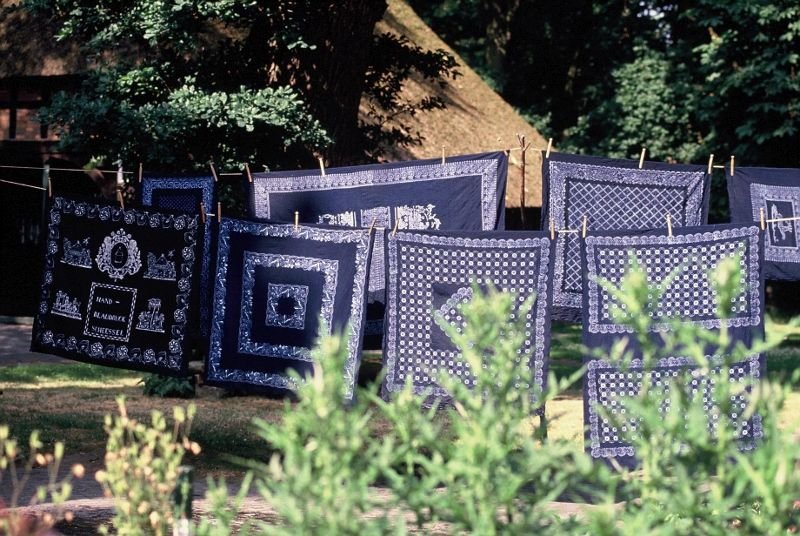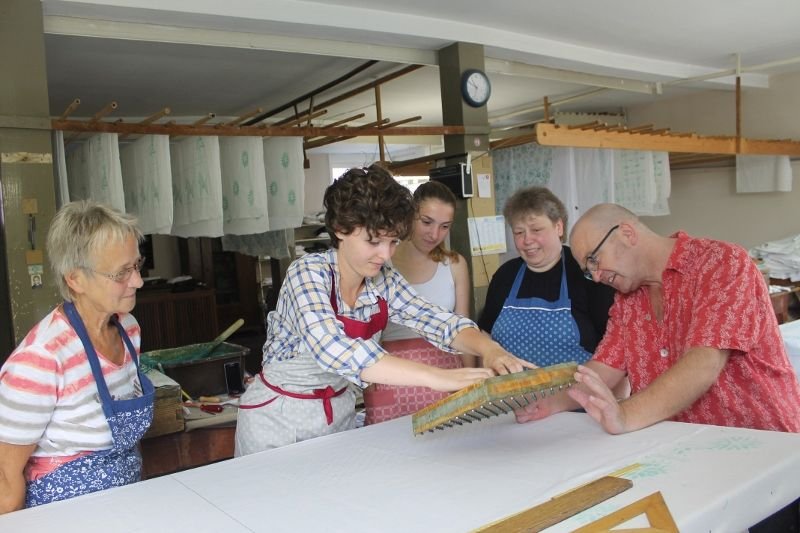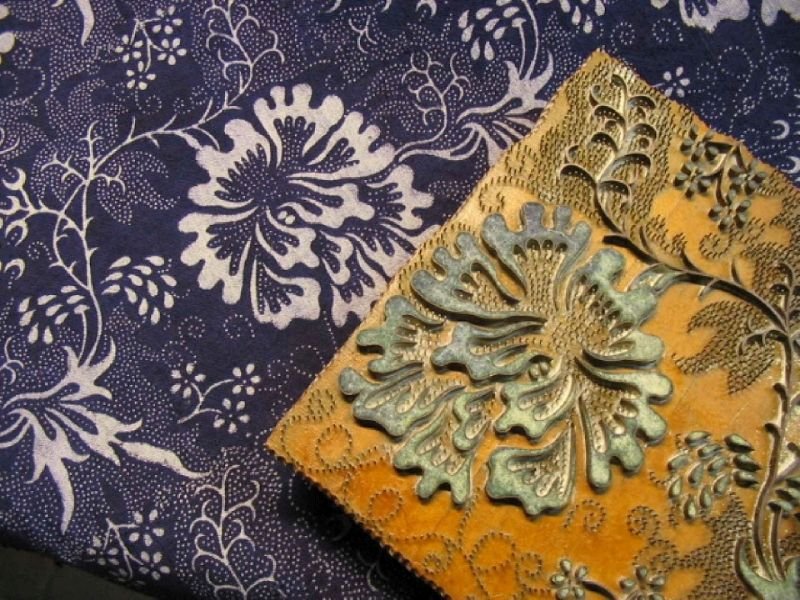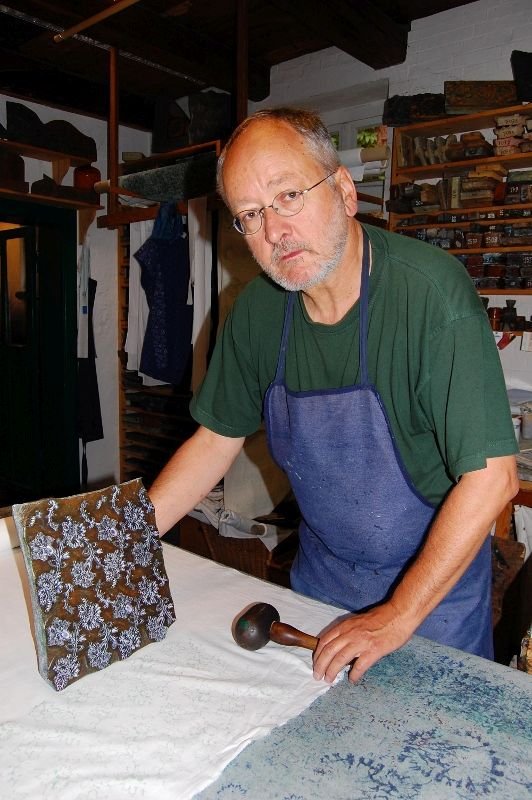Nationwide Inventory of Intangible Cultural Heritage
Indigo Blue Dyeing

“Blaudruck” (Indigo blue-dyeing in a vat) is a reserve-print-process applied to natural materials such as linen, cotton or silk. It refers to a practice of dyeing fabrics blue with indigo and decorating it using dye-resisting mix preventing colouring at the places of ornaments.
Facts & figures
Crucial date: first Sunday in May (dyer fair in Gutau, Upper Austria)
Inscription: 2016
Domains: knowledge and practice concerning nature and the universe; traditional craftsmanship
Where to find: nationwide (also abroad)
Practitioners use hand-crafted wooden and metal blocks to apply the designs onto the fabrics. The up to 300-year-old patterns are either made from wood (pear tree or boxwood) or brass bars. Many workshops have a considerable collection of shapes and motifs. Common motifs show e.g. a pomegranate, peacock feathers or scattered flowers. These blocks transfer a dye-rejecting paste (“Papp”) to the fabric which causes the applied design to remain white after the dyeing process with indigo dye.
How the ingredients are mixed, in what proportions as well as information about additional ingredients are well-kept secrets of each practitioner. The indigo dyeing process is accomplished by immersing the fabric, which is stretched onto a special frame into the indigo bath (in a vat called “Küpe”) and leave it under the surface (initially for a period of 5-10 minutes). After it is removed and as it takes in oxygen from the air, the fabric turns from yellow to green to blue.
This also inspired German language with the saying “Du wirst Dein blaues Wunder erleben” (literally: “You will experience your blue wonder.”, meaning: “You do not know what to expect.“)
Indigo blue-dyeing was introduced in Europe together with the indigo dye plant by travelers of the Dutch East India Company in the second half of the 17th century. In the 18th and 19th Century, the technique of indigo blue-dyeing was very common and widespread in Central Europe. Indigo, a very strong dye, displaced hitherto used substances made of woad. However, during industrialization, most of the resist-printing workshops were closed.
Today there are only a few workshops in Germany, mostly family businesses. Their traditions have existed for generations and the knowledge is passed on within the family. The fabrics produced in the workshops are processed into tablecloths, curtains, shirts, bulk goods etc. The traditional craftsmanship still plays an important role e.g. for the production of traditional habits. Many workshops offer guided tours or workshops in order to explain the printing process, among others. Today, they cooperate and work together with artists and designers from various fields including fashion, interior textiles, furniture as well as art and thus revitalize the traditional technique.
Contacts
Einbecker Blaudruck
Ursula Schwerin
@email
www.einbecker-blaudruck.de
Blaudruckerei Jever
Georg Stark
@email
www.blaudruckerei.de
Blaudruckerei im Heimatverein Niedersachsen e.V.
Annerose Rathjen
@email
www.heimatmuseum-scheessel.de
Blaudruckwerkstatt Cordula Reppe
@email
www.blaudruckpulsnitz.de
Erfurter Blaudruck
Familie Wezyk
@email
Blaudruckerei Elke Schlüter
@email
www.blaudruckerei-luedinghausen.de
Blau- und Zeugdruckerei Krüger
@email
www.blaudruck-berlin.de
Blaudruckerei Angelika Thielemann
@email
Blaudruckerei Folprecht Coswig
Heidi Folprecht-Pscheida
blaudruckerei-folprecht@t-online.de
www.blaudruckerei-folprecht.de








